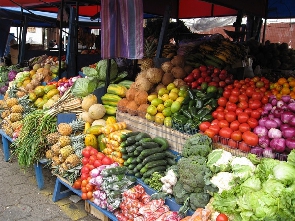While across Africa agriculture is touted as the backbone of many economies, contributing more than a third of their gross domestic product (GDP), it is also the sector rife with hidden costs associated with agrifood systems that translate into higher costs of food.
A study by the Food and Agriculture Organisation (Fao) reveals that every year, Africa incurs or loses $952.5 billion (of which eastern Africa suffers the highest at $264.9 billion) on issues directly linked to agricultural production to feed the globe.
The study, presented in Fao’s latest annual State of Food and Agriculture Report published this week, reveals that while agricultural production and consumption appear to be simple transactions, there are enormous hidden costs that are ostensibly higher in developing countries than advanced economies.
The hidden costs, which are the losses to a country’s GDP that result from their agricultural production, have traditionally been ignored by countries, but are slowly taking much more from countries, compared to the benefits generated by agricultural production.
The UN agency has quantified, in monetary terms, the losses that result from, among other things, greenhouse gas (GHG) emissions from farming activities, water and land use change, loss in economic productivity due to “unhealthy dietary patterns,” and undernourishment.
Globally, Fao estimates that the hidden costs attributed to food systems amount to $12.7 trillion every year, which is about 10 percent of the world’s GDP when agriculture itself accounts for only four percent of global GDP.
Based on the report, the highest hidden cost of agrifood systems globally comes from the productivity losses linked to the burden of diseases caused by unhealthy dietary patterns. These cost the globe approximately $9.3 trillion every year, about 73 percent of total hidden costs.
In Africa, the costs due to poor dietary patterns are also the highest, costing the continent $391 billion yearly and another $18 billion due to the burden of disease caused by undernourishment.
The second largest hidden cost for Africa’s agrifood systems, unlike the rest of the globe, is the loss resulting from agrifood worker poverty, which costs the continent $284.8 billion every year, about 30 percent of total hidden costs.
Eastern Africa has the highest hidden costs, according to the report, totaling $264.9 billion, more than half of which is attributed to agrifood worker poverty.
Ethiopia incurs the highest of these ‘hidden costs’, estimated at $51 billion every year, most of which results from the failure of agriculture to enrich its workers, hence productivity losses.
Tanzania is the next largest victim, incurring $47 billion on unseen expenses resulting from food agrifood systems, and just like Addis, most of the losses are attributed to worker poverty.
Kenya loses $26.8 billion every year to food production and consumption unseen costs, but unlike other countries in the region, the highest is due to the burden of disease due to unhealthy dietary patterns, which costs Nairobi $11.8 billion annually, the study shows.
Uganda, South Sudan, and Rwanda also lose significantly, with their hidden agrifoods cost at $22.6 billion, $10 billion, and $5.3 billion respectively.
Curiously, lower-income countries suffer more of these losses as the hidden costs represent higher percentages of their GDPs compared to more developed economies, the report shows.
From the research, agrifood systems have both positive and negative effects on the globe’s natural, human, social, and produced capital, but seemingly, the bad impacts outweigh the good ones, making the sector much costlier that it is beneficial to the globe currently.
Fao Director-General Qu Dongyu said that as the globe faces mounting threats of food security, climate change, biodiversity loss, worsening poverty, and economic crises, there isn’t a better time to appreciate the “true costs” of food production than now.
“The future of our agrifood systems hinges on our willingness to appreciate all food producers, big or small, to acknowledge these true costs, and understand how we all contribute to them, and what actions we need to take,” said Mr Dongyu.
The Fao will give direction on how countries can minimise these ‘hidden costs’ while making the most of agricultural production, combat food insecurity and reduce negative impacts of agrifood systems on global capital resources.
“The pressing need to incorporate hidden costs into our decision-making processes, as part of the broader effort to transform the way our agrifood systems function, is underscored by the striking figures that already emerge from this year’s findings, despite their tentative nature and the aim of refinement in 2024,” said Mr Dongyu.
For example, while agriculture needs the natural environment for biomass growth, freshwater, pollination, pest control, nutrient cycling, and animal welfare, it causes deforestation, biodiversity loss, GHG emissions, pollution, and ecosystem degradation, which have massive implications that essentially mean loss of money or extra spending by people or governments, the research shows.
Africa Business News of Sunday, 12 November 2023
Source: theeastafrican.co.ke

















